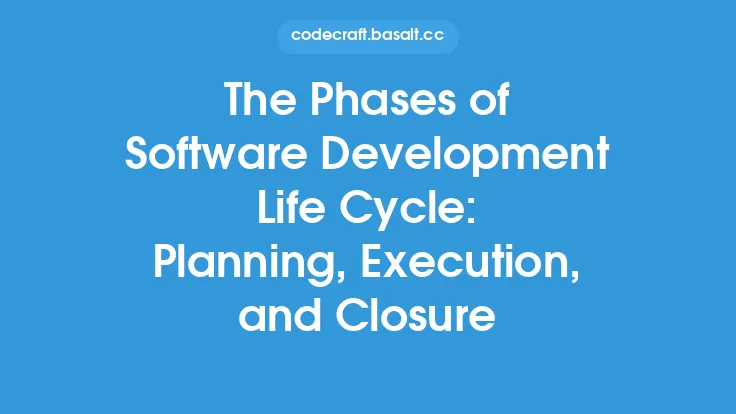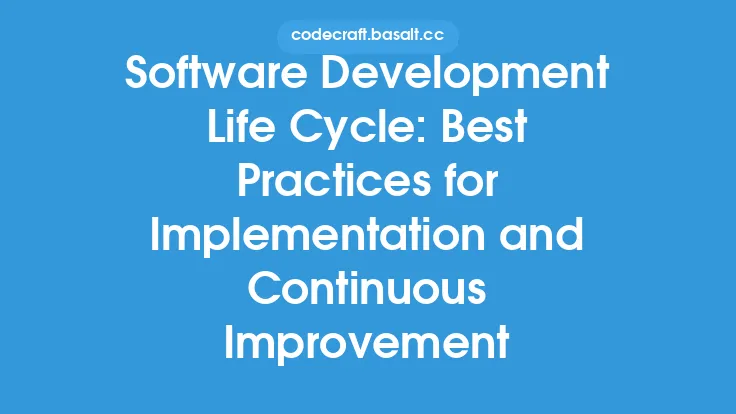The Dynamic Systems Development Method (DSDM) is a framework used for managing and delivering projects using an agile approach. It was developed in the 1990s by a consortium of vendors and experts in the field of software development, with the goal of providing a structured approach to agile project management. DSDM is based on the principles of the Agile Manifesto and is designed to be flexible and adaptable to the needs of individual projects.
History and Evolution of DSDM
DSDM was first released in 1994 and has since undergone several revisions, with the most recent version being DSDM Agile Project Framework. The method was developed in response to the need for a more flexible and adaptive approach to project management, which could respond to the changing needs of businesses and organizations. Over the years, DSDM has evolved to incorporate new ideas and best practices from the agile community, while maintaining its core principles and values.
Key Principles of DSDM
DSDM is based on eight key principles, which are designed to provide a framework for agile project management. These principles are:
- Focus on the business need: DSDM projects are focused on delivering business value and meeting the needs of the organization.
- Deliver on time: DSDM projects are designed to deliver results quickly, with a focus on timely delivery.
- Collaborate: DSDM emphasizes the importance of collaboration and communication among team members and stakeholders.
- Never compromise quality: DSDM projects prioritize quality and ensure that deliverables meet the required standards.
- Build incrementally from firm foundations: DSDM projects are delivered in increments, with each increment building on the previous one.
- Develop iteratively: DSDM projects use an iterative approach, with regular feedback and refinement.
- Communicate continuously and clearly: DSDM emphasizes the importance of clear and continuous communication among team members and stakeholders.
- Demonstrate control: DSDM projects are designed to be controlled and managed, with a focus on risk management and governance.
DSDM Roles and Responsibilities
DSDM defines several key roles and responsibilities, which are designed to provide a clear understanding of the responsibilities and expectations of each team member. These roles include:
- Business Ambassador: The Business Ambassador is responsible for ensuring that the project meets the business needs and delivers value to the organization.
- Business Analyst: The Business Analyst is responsible for gathering and documenting business requirements.
- Technical Co-ordinator: The Technical Co-ordinator is responsible for ensuring that the technical aspects of the project are properly managed.
- Team Leader: The Team Leader is responsible for managing the project team and ensuring that the project is delivered on time and to the required quality.
- Project Manager: The Project Manager is responsible for managing the project and ensuring that it is delivered in accordance with the agreed-upon scope, schedule, and budget.
DSDM Phases
DSDM projects are typically divided into several phases, which are designed to provide a structured approach to project management. These phases include:
- Pre-Project: The pre-project phase is used to define the project scope, goals, and objectives.
- Foundations: The foundations phase is used to establish the project team, define the project schedule, and identify the key stakeholders.
- Exploration: The exploration phase is used to gather and document business requirements.
- Engineering: The engineering phase is used to develop the solution.
- Deployment: The deployment phase is used to deploy the solution to the production environment.
- Post-Project: The post-project phase is used to review the project and identify lessons learned.
DSDM and Agile
DSDM is an agile methodology, which means that it is designed to be flexible and adaptable to the needs of individual projects. DSDM incorporates many of the principles and practices of agile development, including iterative and incremental development, continuous communication, and a focus on delivering business value. However, DSDM also provides a more structured approach to agile project management, with a focus on governance, risk management, and control.
Benefits of DSDM
DSDM offers several benefits, including:
- Improved project delivery: DSDM's focus on timely delivery and incremental development helps to ensure that projects are delivered on time and to the required quality.
- Increased collaboration: DSDM's emphasis on collaboration and communication helps to ensure that team members and stakeholders are aligned and working towards a common goal.
- Better risk management: DSDM's focus on risk management and governance helps to ensure that projects are properly controlled and managed.
- Improved business value: DSDM's focus on delivering business value helps to ensure that projects meet the needs of the organization and deliver tangible benefits.
Challenges and Limitations of DSDM
While DSDM offers several benefits, it also has some challenges and limitations. These include:
- Complexity: DSDM can be complex to implement, especially for large and distributed teams.
- Governance: DSDM's focus on governance and control can be challenging to implement, especially in organizations with a strong culture of autonomy and independence.
- Scalability: DSDM can be challenging to scale, especially for large and complex projects.
- Training and certification: DSDM requires specialized training and certification, which can be time-consuming and expensive.
Conclusion
DSDM is a powerful agile methodology that offers a structured approach to project management. Its focus on business value, collaboration, and continuous communication helps to ensure that projects are delivered on time and to the required quality. While DSDM has some challenges and limitations, it is a valuable tool for any organization looking to improve its project delivery and management capabilities. By understanding the principles, roles, and phases of DSDM, organizations can harness the power of agile development to deliver successful projects and achieve their business goals.





